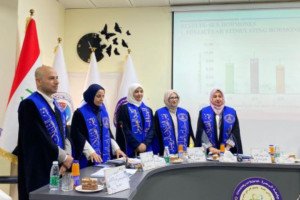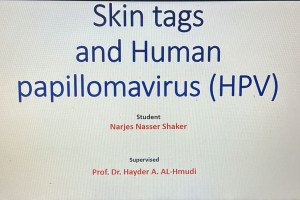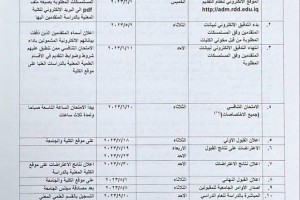
The College of Science at the University of Basrah organized a seminar entitled (Physiological changes in the organs of mice infected with Acanthamoeba spp. ) by graduate student Sumaya Adnan Mahdi. The study aims to isolate and diagnose the parasite from the eyes of infected people and study its effect on blood and biochemical parameters and on the hormones insulin and aldosterone in all study groups and compare them with the control group, find out the histological changes it causes on liver and kidney tissues in experimental mice and compare them. With the control group, studying the effect of insulin on parasite reproduction in the culture medium inside the laboratory. The study included clear histological changes in the liver and an increase in liver enzymes AST, ALT, and LDH. 2During the stages of infection, infection with Acanthamoeba was also associated with an increase in CPR levels in the blood, a decrease in white blood cells, and an increase in platelets. It was also shown that the kidneys were not affected by Acanthamoeba infection despite the tissue changes caused by the parasite in the kidneys during the periods of infection, with the insulin level stable during the weeks of the study. Insulin has a lethal effect on the Acanthamoeba parasite at a dose of 100 international units in laboratory cultures, as it is directly related to increased insulin concentrations and the duration of exposure. The study recommended increasing the period of infection to more than four weeks in the organs studied. We recommend conducting extensive studies to determine the lethal dose of insulin for the parasite in the living body, provided that it is safe for the host cells. An immunological and molecular study of the parasite’s effect on the organism’s body. A study of the parasite’s effect on the adrenal gland hormones. And the thyroid. Studying the effect of the parasite on other organs such as the spleen, pancreas, and the digestive and respiratory tract. Studying the effect of the parasite on the female and male reproductive systems.







